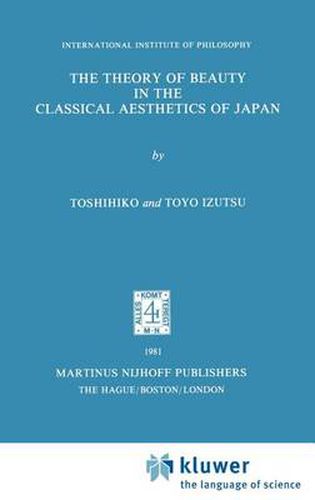Readings Newsletter
Become a Readings Member to make your shopping experience even easier.
Sign in or sign up for free!
You’re not far away from qualifying for FREE standard shipping within Australia
You’ve qualified for FREE standard shipping within Australia
The cart is loading…






This title is printed to order. This book may have been self-published. If so, we cannot guarantee the quality of the content. In the main most books will have gone through the editing process however some may not. We therefore suggest that you be aware of this before ordering this book. If in doubt check either the author or publisher’s details as we are unable to accept any returns unless they are faulty. Please contact us if you have any questions.
The Japanese sense of beauty as actualized in innumerable works of art, both linguistic and non-linguistic, has often been spoken of as something strange to, and remote from, the Western taste. It is, in fact, so radically different from what in the West is ordinarily associated with aesthetic experience that it even tends to give an impression of being mysterious, enigmatic or esoteric. This state of affairs comes from the fact that there is a peculiar kind of metaphysics, based on a realization of the simultaneous semantic articulation of consciousness and the external reality, dominating the whole functional domain of the Japanese sense of beauty, without an understanding of which the so-called ‘mystery’ of Japanese aesthetics would remain incomprehensible. The present work primarily purports to clarify the keynotes of the artistic experiences that are typical of Japanese culture, in terms of a special philosophical structure underlying them. It consists of two main parts: (1) Preliminary Essays, in which the major philosophical ideas relating to beauty will be given a theoretical elucidation, and (2) a selection of Classical Texts representative of Japanese aesthetics in widely divergent fields of linguistic and extra-linguistic art such as the theories of waka-poetry, Noh play, the art of tea, and haiku. The second part is related to the first by way of a concrete illustration, providing as it does philological materials on which are based the philosophical considerations of the first part.
$9.00 standard shipping within Australia
FREE standard shipping within Australia for orders over $100.00
Express & International shipping calculated at checkout
This title is printed to order. This book may have been self-published. If so, we cannot guarantee the quality of the content. In the main most books will have gone through the editing process however some may not. We therefore suggest that you be aware of this before ordering this book. If in doubt check either the author or publisher’s details as we are unable to accept any returns unless they are faulty. Please contact us if you have any questions.
The Japanese sense of beauty as actualized in innumerable works of art, both linguistic and non-linguistic, has often been spoken of as something strange to, and remote from, the Western taste. It is, in fact, so radically different from what in the West is ordinarily associated with aesthetic experience that it even tends to give an impression of being mysterious, enigmatic or esoteric. This state of affairs comes from the fact that there is a peculiar kind of metaphysics, based on a realization of the simultaneous semantic articulation of consciousness and the external reality, dominating the whole functional domain of the Japanese sense of beauty, without an understanding of which the so-called ‘mystery’ of Japanese aesthetics would remain incomprehensible. The present work primarily purports to clarify the keynotes of the artistic experiences that are typical of Japanese culture, in terms of a special philosophical structure underlying them. It consists of two main parts: (1) Preliminary Essays, in which the major philosophical ideas relating to beauty will be given a theoretical elucidation, and (2) a selection of Classical Texts representative of Japanese aesthetics in widely divergent fields of linguistic and extra-linguistic art such as the theories of waka-poetry, Noh play, the art of tea, and haiku. The second part is related to the first by way of a concrete illustration, providing as it does philological materials on which are based the philosophical considerations of the first part.